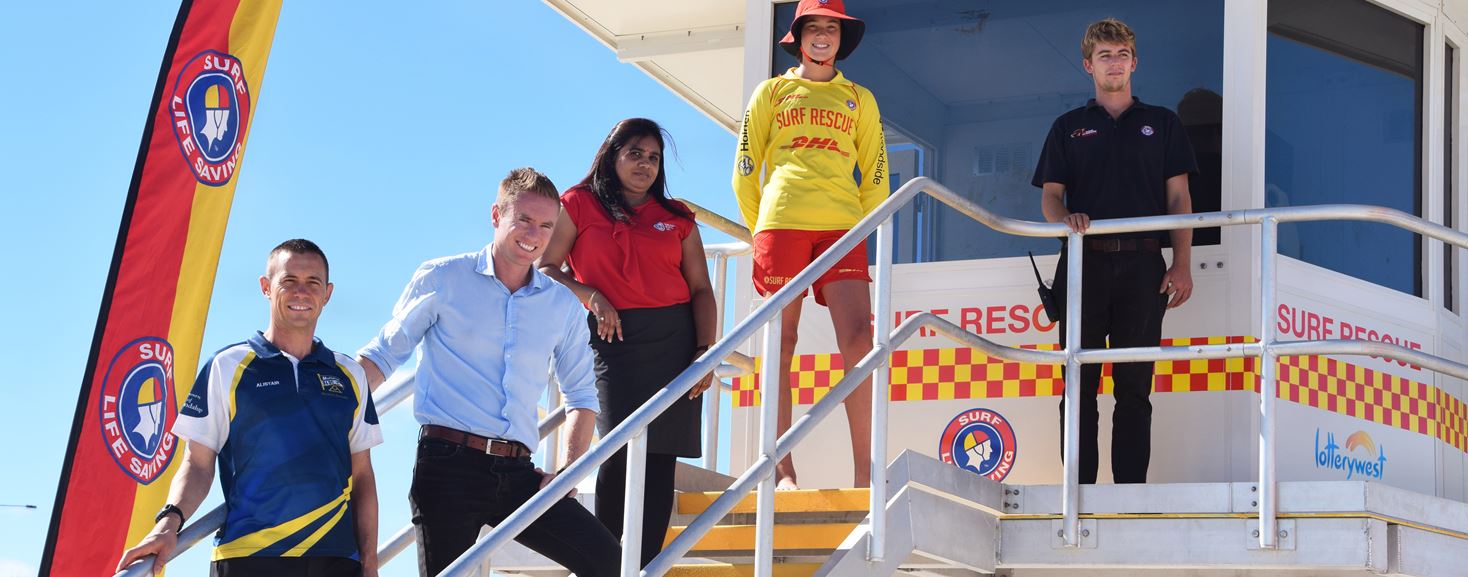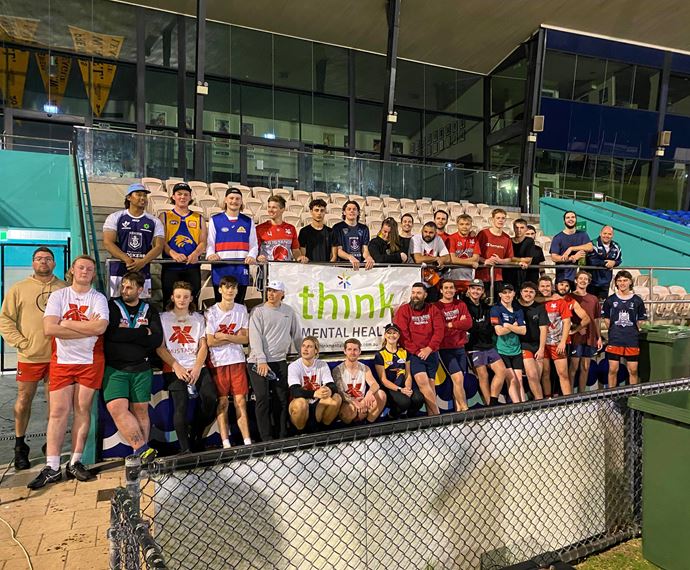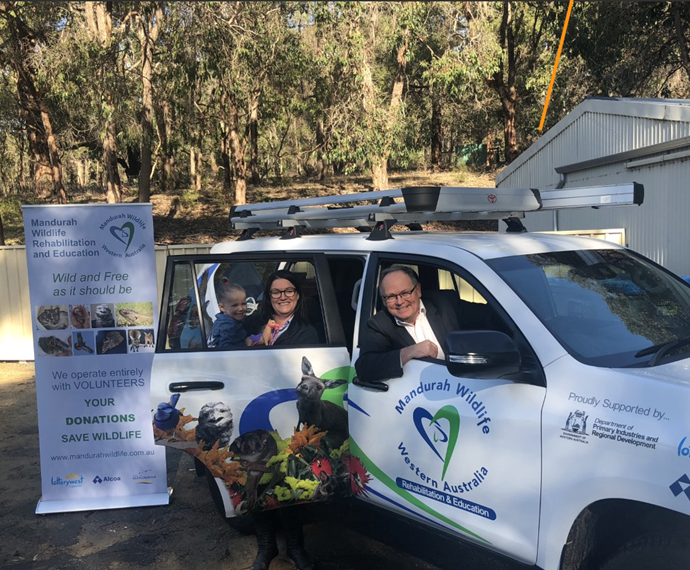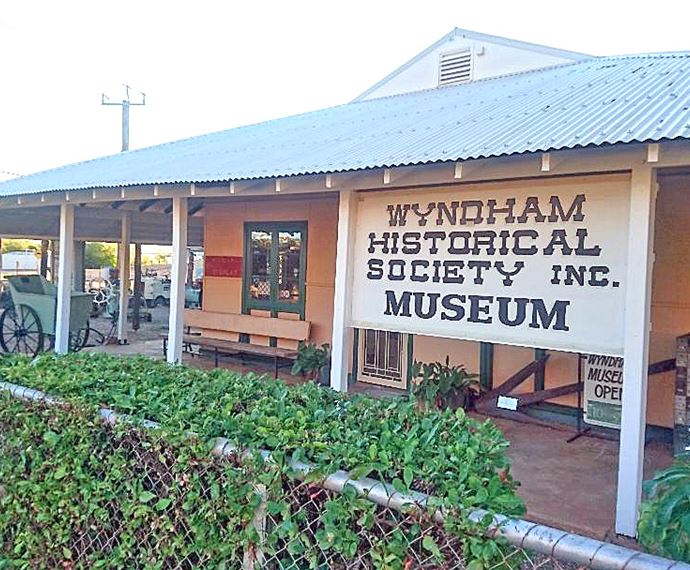Observation towers and volunteer sustainability
Surf Life Saving WA (SLSWA) aims to provide emergency beach rescue and safety services to the Western Australian community. Established in 1925, the organisation comprises 31 clubs located throughout the State with more than 23,700 members. Volunteer surf lifesavers, alongside professional lifeguards, patrol beaches around WA between October and April each year.
Through this grant, ten purpose-built lifesaving observation towers were installed at beaches across WA, to improve the ability of lifesaving services to spot dangers. It also supported a Volunteers Sustainability Project to attract and retain volunteers across the State.
Towards increasing community safety at beaches through attraction and retention of volunteers and the installation of Lifesaving Observation Towers.
Surf Life Saving Western Australia Incorporated
1/1/2017
$1,223,223
Lotterywest
$899,482
State-wide
General Community
- Improved surveillance standards to better respond to the detection of sharks, rips, swimmers in distress and record operational data.
- Significant feedback received from patrolling and non-patrolling members, parents of Nippers and Juniors and club committee members through the member retention and engagement survey.
- Creation of a Membership Engagement Plan, dealing with recruitment, development, and retention, to support the development of a sustainable membership base.
- Development of the Membership Engagement Toolkit to help clubs with the recruitment and retention of their members.
- Engaging with local stakeholders throughout the process of design, construction and installation.
- Collaboration with local councils and surf life saving clubs to improve beach safety conditions.
- Broad engagement with SLSWA membership to understand their experiences in an effort to attract and retain more members.
- Leveraging communication and promotional opportunities around the installation of the new towers to promote the Volunteer Sustainability initiatives.
- Beach locations and beach accessibility made installation of some of the towers challenging.
- The "Build one install one" methodology slowed down timeframes.
- Project management was more onerous than expected, requiring skills not normally part of SLSWA’s core business.

Opportunity
The beach holds a central place in Australian life, with more than 85 per cent of the population living within 50 kilometres of the coastline [1]. The Australian coastline is vast, extending 59,736 kilometres with close to 12,000 beaches [2].
Preventing drowning at beaches, oceans, and rocks was identified as a priority within the Australian Water Safety Strategy due to their central role in recreational activities [2].
Australian Surf Life Saving Clubs provide an important service to the community, keeping an eye on visitors at beaches around the country. In WA, lifesaving services, including a range of volunteer and paid services deliver essential and critical patrol services at more than 40 locations across the State. In the 2020-21 period, these services delivered almost 136,000 patrol hours, performed 574 rescues and more than 74,700 preventative actions [3].
Quickly rescuing and providing appropriate first-aid to a person who is struggling in the water has been shown to be the most important factor in determining the outcome [4 & 5]. Ensuring Surf Lifesavers who are patrolling the beach have the best chance of spotting people struggling in the water is therefore essential to prevent drowning.
Approach
Through this grant, SLSWA was able to support the installation of ten purpose-built lifesaving Observation Towers, alongside co-contributions from clubs and local councils.
The non-permanent towers provide an elevated surveillance platform with the deck almost three metres off the ground. This elevated vantage point coupled with uninterrupted sight lines, a perimeter gantry and stair system that allows rapid movement, play an important role in improving beach safety outcomes by reducing the time between spotting a beach user needing support and providing the response.
Towers were installed at the following beach locations:
- Koombana Bay, Bunbury
- City Beach
- Coogee Beach
- Pyramids Beach, Mandurah
- Town Beach, Mandurah
- Mullaloo Beach
- Scarborough Beach
- Secret Harbour Beach
- Sorrento Beach
- Yanchep Lagoon
“The implementation of these towers will not only increase our lifesavers’ ability to spot hazards in the water but significantly provide the opportunity to increase our patrolling footprint.”
SLSWA General Manager
While having the best equipment and infrastructure available is an important part of ensuring beach safety, clubs around WA rely on volunteer members to run patrols and perform preventive actions and rescues. Through the grant, SLSWA engaged Deloitte to undertake research to improve member engagement and sustainability for both clubs and the organisation.
“…our membership is our most important asset.”
SLSWA Membership Engagement Plan
Impacts and outcomes
With the extra visibility offered by the towers, there has been a significant improvement in the expanse of coastline and near shore ocean area that can be monitored. Lifesavers have a whole of beach view as they are elevated above beach users, games and activities, signs, umbrellas and tents. The towers have also improved surveillance standards to better respond to the detection of sharks, rips, swimmers in distress and record operational data.
Beachgoers are now able to quickly and easily identify where the patrol is located, which helps to provide an immediate identifiable hub for rapid responses to beach safety. This is especially important in response to aquatic or medical emergencies, both on the beach and in surrounding precincts.
Lifesavers rely on regular communication between members of the patrol and other Surf Lifesaving Clubs as part of their work. Being able to position localised Wi-Fi and repeater capability at an elevated position helps to improve operational communication. It also helps to keep Lifesavers and their equipment safe, by providing a shaded and well-ventilated area for patrols and secure storage of operational equipment overnight.
As part of the development of the member retention and engagement strategy, patrolling and non-patrolling members, parents of Nippers and Juniors and club committee members were surveyed, totalling 2,010 returned surveys. The results were overall positive with 88 per cent reporting they were satisfied or highly satisfied with their involvement at the club, and 85.7 per cent of those surveyed found patrols to be a personally rewarding experience.
Drawing on the information collected, SLSWA was able to generate a Membership Engagement Plan, dealing with recruitment, development, and retention, to support the development of a sustainable membership base. The organisation was also able to produce a Membership Engagement Toolkit to help clubs with the recruitment and retention of their members.
The Engagement Plan focuses on achieving the following objectives to improve in areas identified in the research:
- Active recruitment of adults
A range of above and below the line communications pieces were developed to highlight the different opportunities. Resources were also provided to clubs to enable them to further leverage the marketing activities of SLSWA. - Increase support for club-based sport
A decentralisation of surf sports events to give clubs greater autonomy and control over the delivery of these events with a range of support services to facilitate their delivery. Several additional sport development opportunities, such as development carnivals and coaching clinics have also been introduced to encourage initial participation amongst younger members, which will ultimately lead to increased participating in surf sports competition - Flexible participation options
A review of membership categories found that some identified as potential barriers to participation could be simplified or removed without detriment to outcomes. While the full extent of this impact is yet to be seen, initial indicators on participation are positive. - Improved communication
Following a review, SLSWA is now more proactively using their member database to ensure communications are relevant and timely and has included segmentation to directly engage with members on topics of their interest. An organisational structure review also saw the appointment of additional staff to ensure a primary point of contact for clubs across their four organisational pillars (Nippers and Youth, Surf Sport, Training and Education and Lifesaving). - Embrace community
Linked to improved communications, embracing community include items such as welcoming new members through “Welcome” eNewsletters and sharing information about the various pathways available to members and ways they can participate and contribute to their club “community”. - Nippers value proposition
SLSWA undertook a review of the Nippers program. This led to the refinement and development of the program curriculum to ensure standardisation across all clubs and clear, progressive skills attainment for the participants across the years.
Since implementing the Membership Engagement Plan, membership has grown, with a 16 per cent increase from 20,483 members in 2017-18 to 23,776 members in 2020-21. Over the same period, the Nippers program has developed from 7,000 participants in 2017-18 to more than 8,600 in 2020-21.

What worked
Keeping the process local
Engaging with local stakeholders throughout the process was a key factor in the successful design, construction and installation of the towers. The organisation consulted early with end user groups and stakeholders, which formed a key part of the development process. Local design and manufacture provided the opportunity to quickly and frequently communicate with the manufacturer, and where required make changes to the design. The process also provided a great opportunity to work with local councils and surf lifesaving clubs to improve beach safety outcomes.
Engaging widely with members influenced strategy development
By engaging broadly with its membership, SLSWA had the opportunity to identify how it could improve the memberships’ experience and ultimately attract and retain more members. Initial indications show that changes implemented have been positive and they will be reviewed and updated as necessary in line with SLSWA’s Strategic Plan following the 2024-25 season.
Ongoing communication and promotion
Promotional activities including media were undertaken upon installation of each tower. Through these activities, SLSWA was able to promote the Towers, as well as highlight the impact and relevance of lifesaving services to the community. Communication and promotion of the Volunteer Sustainability initiative to clubs was also essential. To facilitate this, SLSWA produced a Member Engagement Toolkit for clubs to ensure they have the tools necessary to provide the best possible experience for members.
Key challenges
Logistical difficulties with installation
A variety of beach locations and beach accessibility made installation of the towers a challenge. Bulk supply and storage of manufacturing materials would have improved timeframes to complete installation: rather than applying a 'build one install one' methodology.
Overall project management process was more onerous than expected
The nature of the Observation Tower project called on several skills that are not normally part of SLSWA’S core business. This included experience in engineering and construction associated with the development and installation of the towers. The project also required detailed knowledge of local government administrative processes, such as development applications and building permits. Having staff with these skills from the beginning of the process would have assisted with expediting timelines. Having longer lead times for community consultation where the tower was installed close to built-up residential areas would have been beneficial.
REFERENCES
- Clark, G., & Johnston, E. (2016). Coasts (Australia state of the environment 2016, Issue. https://soe.environment.gov.au/theme/coasts
- Australian Water Safety Council. (2021). Australian Water Safety Strategy 2030. https://www.royallifesaving.com.au/__data/assets/pdf_file/0003/43275/AWS_Strategy2030_Final-for-web.pdf
- SLSWA. (2021). 2020/21 Annual Report (National Costal Safety Reports, Issue. https://s3.ap-southeast-2.amazonaws.com/assets.surflifesavingwa.com.au/app/uploads/2021/09/13163731/SLSWA_Annual_Report_2020-21_FINAL_web.pdf
- Carballo-Fazanes, A., & Bierens, J. J. (2020). The visible behaviour of drowning persons: A pilot observational study using analytic software and a nominal group technique. International journal of environmental research and public health, 17(18), 6930.
- Trimble, S., & Houser, C. (2018). Seawalls and signage: How beach access management affects rip current safety. In Beach Management Tools-Concepts, Methodologies and Case Studies (pp. 497-524). Springer. https://link.springer.com/chapter/10.1007/978-3-319-58304-4_24
Learn about wellbeing
Understand how your community is going to help you to better target and plan your project.
Ready to plan your project?
Understand your vision, plan your impact and report on the outcomes of your project with three easy interactive tools in the Community Impact Planner.
Acknowledgement of Country
The Western Australian Community Impact Hub acknowledges and pays respect to the Traditional Owners of the land on which we are based, the Whadjuk people of the Noongar Nation and extends that respect to all the Traditional Owners and Elders of this country. We recognise the significant importance of their cultural heritage, values and beliefs and how these contribute to the positive health and wellbeing of the whole community.
![A7R02243[1]](/media/wwvcasym/a7r02243-1-resized.jpg?anchor=center&mode=crop&width=690&height=570&rnd=133045363314000000&quality=80)





